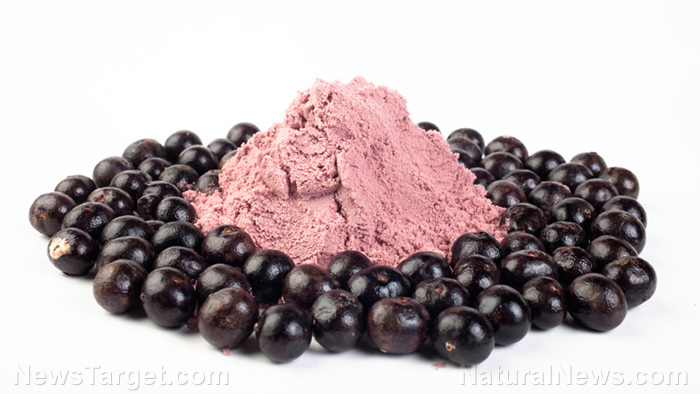Protecting your eyes over the long haul: Healthy habits for preventing macular degeneration
08/20/2019 / By Zoey Sky

Age-related macular degeneration (AMD) is a condition that affects millions of individuals in the U.S. There is currently no cure for the disease, but making lifestyle changes can help lower your risk of developing AMD.
What is age-related macular degeneration?
AMD causes the blurring of a person’s central vision because of damage to the macula, a small area at the back of your eye. The macula allows you to see fine detail.
AMD is often associated with aging. It causes no pain and, in some cases, it develops gradually so that people notice very little change in their vision.
However, the condition can also progress faster. Severe cases of AMD lead to vision loss in both eyes. In the U.S., it is a major cause of blindness in people aged 60 or older.
There are two forms of age-related macular degeneration: wet and dry.
- Wet macular degeneration occurs when abnormal blood vessels behind your retina grow under the macula. These new blood vessels are very fragile, and they often leak blood and fluid. As the blood and fluid raise your macula from its normal place at the back of your eye, damage to the macula occurs rapidly, resulting in loss of central vision. If you have wet macular degeneration, straight lines will appear wavy. This is an early symptom of this eye disease. Consult an eye care professional immediately.
- Dry macular degeneration causes the light-sensitive cells in your macula to slowly break down. This diminishes your central vision. Dry AMD can occur in just one eye, but it may eventually affect both eyes. Unfortunately, the cause of dry macular degeneration remains unknown.
Eye care professionals use certain risk factors to help determine the likelihood of a patient developing AMD. Age is a major risk factor.
According to Dr. Julie Rosenthal, a retina specialist at the Kellogg Eye Center, AMD is more common among women and Caucasians.
This is why at-risk patients need to get regular eye exams that include pupil dilation and further macular degeneration tests, like an optical coherence tomography (OCT) test, to determine if they have AMD.
Lifestyle habits that can improve your eye health
If you want to lower your risk of developing AMD or slow the condition, these healthy habits can help boost your eye health as you age.
Test your vision using an Amsler grid.
An Amsler grid is a simple black and white grid with horizontal and vertical lines and a dot in the center. This tool helps eye care professionals detect vision problems linked to macular damage.
To use an Amsler grid at home, stare at the paper grid: If you notice that the central part of your vision in one eye has become darker or the lines in the grip seem wavy, consult a doctor immediately.
Keep an Amsler grid at eye level somewhere that reminds you to check it daily.
Stop smoking.
Smoking is an unhealthy habit and it can double your risk of developing AMD. This habit also exposes you to harmful free radicals, which are unstable molecules linked to cellular damage.
Free radicals prevent nutrients from reaching the retina.
Check your family history.
If you have a first-degree relative with AMD, you are also at greater risk of developing the condition.
Once you have determined that a relative has been diagnosed with AMD, keep an out for the symptoms associated with the condition, such as:
- Difficulty adapting to low light
- Difficulty recognizing faces.
- Seeing straight lines that appear wavy.
Eat more leafy greens.
Leafy green vegetables like kale, spinach, and Swiss chard are full of antioxidant vitamins. The nutrients in these superfoods can help fight damage caused by free radicals, which is linked to eye disease. (Related: Take a look at this: Can coconut oil help prevent macular degeneration?)
Wear sunglasses.
Sunglasses can help protect your eyes from ultraviolet (UV) and blue light, both of which may cause retinal damage from constant exposure.
Maintain healthy blood pressure and weight.
High blood pressure (hypertension) can cause poor blood circulation, which can then restrict blood flow to the eyes. This can increase your risk of developing AMD.
Lose weight to manage your blood pressure and significantly improve your eye health and overall well-being.
Eat superfoods like kale and spinach and maintain a healthy weight to lower your risk of AMD.
Sources include:
Submit a correction >>
Tagged Under:
age-related macular degeneration, aging, AMD, Amsler grid, blindness, blood pressure, central vision, clean food, dry macular degeneration, eye disease, eye health, eyes, food cures, food is medicine, Free radicals, functional food, Leafy greens, lifestyle changes, macula, macular degeneration, natural health, natural medicine, organics, prevention, proper nutrition, remedies, retina, retinal degeneration, retinoprotective effects, stopsmoking, vegetables, vision, vision loss, weight maintenance, wet macula degeneration
This article may contain statements that reflect the opinion of the author
RECENT NEWS & ARTICLES
Antioxidants.News is a fact-based public education website published by Antioxidants News Features, LLC.
All content copyright © 2018 by Antioxidants News Features, LLC.
Contact Us with Tips or Corrections
All trademarks, registered trademarks and servicemarks mentioned on this site are the property of their respective owners.





















